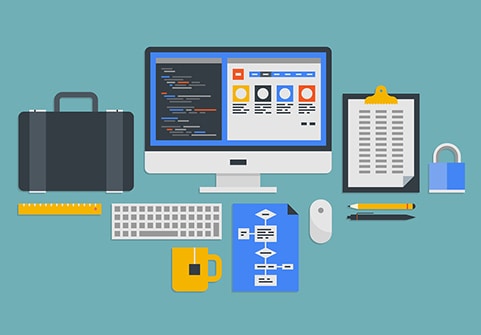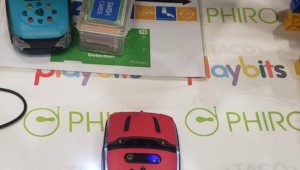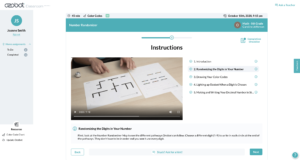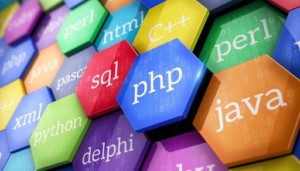Coding in the Classroom: Here to Stay

Eric Nentrup
The value of computer programming has been rising exponentially for decades. To the point where now coding has gained traction in mainstream media. TV shows like CBS’s The Big Bang Theory or HBO’s Silicon Valley are good indicators of computer science careers are taking center stage. The domino effect created by the demand for amazing technology is likewise leading to a demand for skilled workers to engineer and program. Whether training comes through a high school certificate program, or a degree in computer science, the need for project-ready coders is only increasing. The bottom-line: All schools at all levels are kicking coding into overdrive.
This growing cultural campaign for coding has influenced universities, technical schools, and even high schools and middle schools to make coding part of core curriculum. School leaders are recognizing the need to prioritize the teaching of software languages and programming skills. This is concurrent with an emphasis on STEM courses in general. The shift towards STEM curricula is influencing updates in education policy as well. In fact, earlier this fall, California Governor Jerry Brown signed legislation that allows computer science classes to count as mathematics on school transcripts. The demand is simply that great.
Embracing coding may seem like a daunting task to a classroom teacher. In fact, spreading some of this zeal for code can be a cultural challenge within schools who’ve yet to embrace it. On the surface, it might appear that not every school has the staff know-how or collective confidence to wade into such an undertaking of launching a coding program for the general audience. But that’s changing thanks to organizations such as Code.org and their annual event Hour of Code.
Bill Gates and Mark Zuckerberg have put their clout and money behind Code.org, leading a slew of other tech giants to contribute as well. They have deliberately taken an approach that’s more friendly for schools looking at choosing a non-traditional coding program for their students. Promoting the message that coding is a critical thinking skill, the Hour of Code is an effort building towards a movement. Code.org’s ambitious goal for the second year of the global event is 100 million participants, each completing at least an hour of tutorials.
At Center Grove High School in Greenwood, Indiana, where I am an eLearning coach, teachers are planning their second year of participating in the Hour of Code event. Physics, engineering and business computing departments, are starting to see events like the Hour of Code as a chance to involve even more of the student body in the computer sciences.
In fact, instructors are beginning to envision the Hour of Code as a district-wide initiative where young elementary students join in logging sixty minutes of work in age-appropriate tutorials provided by Code.org. Some teachers already use Code.org’s tutorials and other resources in instructional activities. Many students are familiar with the structure of Code’s lessons, and with guided support from experienced facilitators, they’ve applied lessons to programming tasks in the real world. Teachers also make use of the materials in planning coding lessons provided by Project Lead The Way and desire for students to be exposed to an even broader application of coding skills.
Their fervor for participating in the Hour of Code has caught the attention of the district and even a local IT business. District cabinet members have been briefed on the event and buy in for participation beyond the high school is developing. A fellow Instructional Technology Specialist has joined the effort by ensuring that Hour of Code resources are available to the district’s 400+ teachers. Likewise, communication with building leaders and efforts to publicize the event on social media through the hashtag #CGcodes, are being put into play to improve awareness. Support of these teachers’ vision for infusing their instruction with technology is exemplary of leadership in our district. Together, teachers and school leaders are using the Hour of Code to reach beyond current rosters to have an even wider impact within the district.
Beyond the broader district support, networking to find local businesses willing and able to support the event has led to a partnership with Kinney Group, an Indianapolis IT firm. The business is sending one of their engineers to work alongside students and field a question and answer luncheon with students interested in IT.
This support plus the tools at Code.org are making such a vision, realistic and achievable, even with just weeks before the event. Follow along at #CGcodes to keep up with their progress.
It’s not too late to participate in the Hour of Code. Here’s how:
- Sign up at HourOfCode.Org and explore their resources
- Start with your own classroom and make time for upwards of an hour of tutorials
- Partner with a colleague and another classroom
- Communicate to your school leaders: dept. chairs, principals, tech. dept., superintendent
- Reach out to the local business community and media for publicity.
Not convinced this is worth participating in? Watch this:
For more on coding, check out:
- Coding In The Classroom: How Teachers Are Learning To Code
- Experts Weigh in on K-12 Coding & CS Resources
- Coding is Not Just for Computer Programmers

Eric Nentrup is an eLearning coach in central Indiana and advocate for teachers and students. Follow Eric on Twitter at @ericnentrup.




Matt Harrell
Good stuff Eric. Code.org is doing amazing things! I'm a computer science grad from NC State and serve as the Tech Chair at my children's elementary school. I helped assemble the Hour of Code at the school last year and everyone is super excited about this year. I've been impressed with the resources that code.org now has a available to teachers and our Tech Teacher as tracking the progress of all the students in the school. HUGE!
TechyKids Canada
This is such an informative blog and you have explained it so well. It would help many to understand the importance of technology in education. Thanks for sharing!
TechyKids Canada
This is such an informative blog and would help many to understand the importance of teaching coding for kids. In coming years, these coding skills will set them apart from others and would also help them to secure their career in STEM fields. Thanks for sharing, it really helpful!